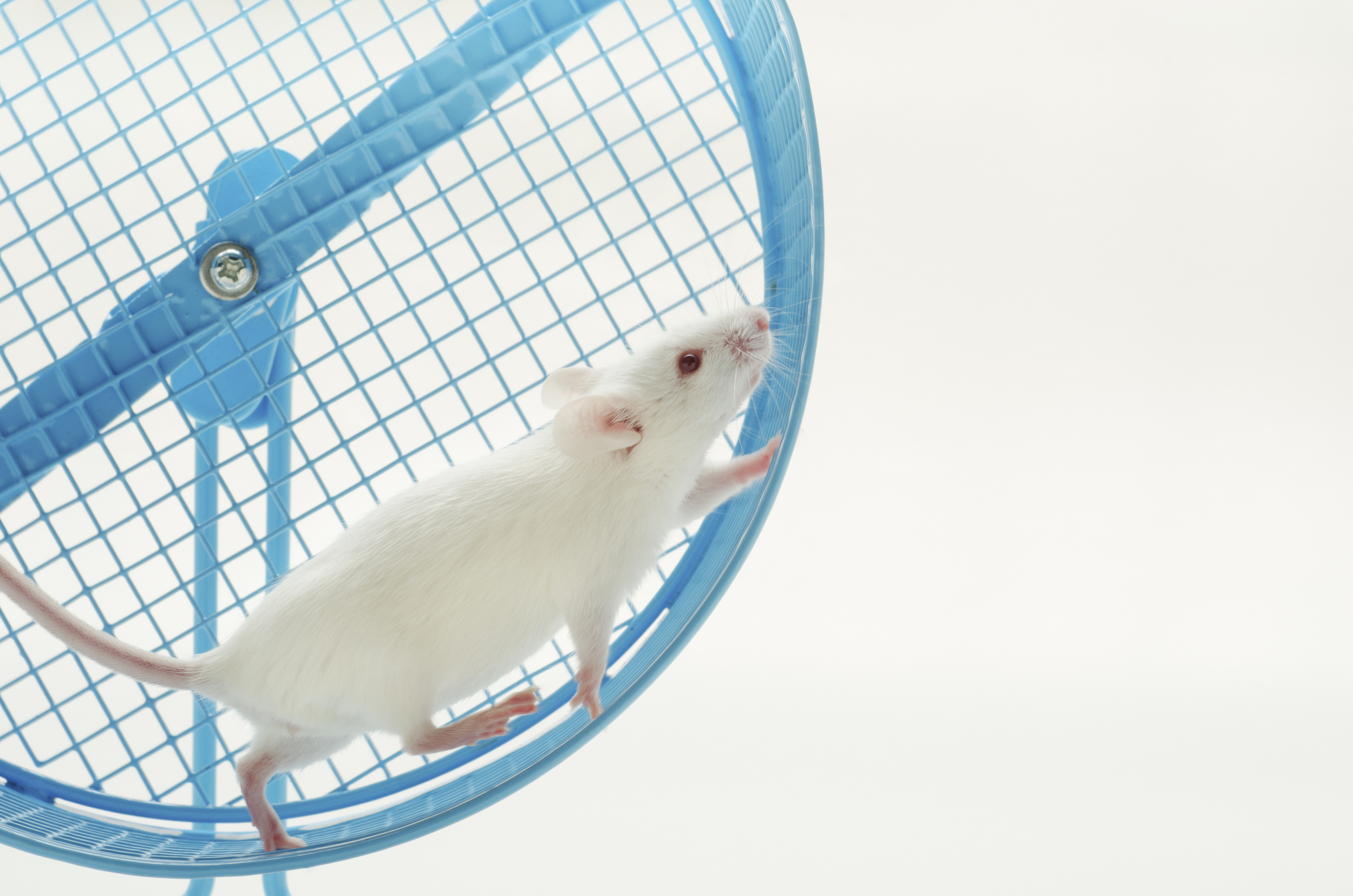
Experimental Huntington’s drug improves gait in Rett mice
A candidate drug in clinical trials for Huntington’s disease reverses gait problems in a mouse model of Rett syndrome.
A candidate drug in clinical trials for Huntington’s disease reverses gait problems in a mouse model of Rett syndrome. The drug, called pridopidine, binds to a protein that is implicated in several neurodegenerative conditions, including Alzheimer’s disease and amyotrophic lateral sclerosis.
Rett syndrome is a rare condition characterized by breathing problems, intellectual disability and, often, autism. No treatment is yet available to treat people with the syndrome. About half of women with the condition don’t live past age 50; boys are stillborn or die in infancy.
“[Pridopidine] is a safe, novel drug with encouraging potential to improve the life of Rett patients, who currently have no treatment,” says Michal Geva, Pharmacology Project Leader at Teva Pharmaceutical Industries in Netanya, Israel. Geva presented the unpublished findings today at the 2017 Society for Neuroscience annual meeting in Washington, D.C.
En route to approval by the U.S. Food and Drug Administration, pridopidine has cleared early tests of safety and efficacy.
Last year, based on a trial of 408 people with Huntington’s, Teva researchers reported that the drug improved the quality of life, but not motor problems, in people with the condition.
Huntington’s and Rett syndrome may seem to have little in common: Huntington’s strikes late in life and is degenerative. Features of Rett, on the other hand, begin to appear as early as 6 months of age.
But the conditions do share some features. For instance, both are characterized by balance problems and by trouble aligning joints and muscles to walk properly.
Mouse models of the two conditions also share some abnormalities. For example, both sets of mice have neurons with few dendritic spines, the neuronal branches that receive signals1.
Success in strides:
Pridopidine improves motor problems and other features in Huntington’s mice2. So the researchers hypothesized that a daily dose of the drug might also improve gait in Rett mice.
The team first tested the drug in 20 male Rett mice at 4 weeks of age. They gave another 20 male Rett mice and 20 typical mice a sham drug. At 6 weeks of age, the males had improved on average by 45 percent compared with the sham group on a range of tests measuring gait. These include tests of stride length and limb coordination and a proprietary test of motor skills called NeuroCube.
The researchers also tested the drug in 40 female Rett mice at 5.5 weeks of age. They split the females into a high- and a low-dose group; they also gave 20 female Rett mice and 20 typical female mice a sham drug.
The high-dose females improved their gait by 45 percent at 8 weeks of age and by 55 percent at 12 weeks compared with the sham group. The low-dose females showed improvement on only some measures of gait.
The drug didn’t improve the mice’s survival, however. Male Rett mice typically die at around 8 to 10 weeks of age, as did the treated male mice in the study.
Exactly how the drug might help people with Rett is unclear. “We still need to understand the mechanism of action of pridopidine,” says Geva.
The researchers plan to test the drug’s effect on breathing in Rett mice. They also aim to study whether it’s safe for use in children.
For more reports from the 2017 Society for Neuroscience annual meeting, please click here.
References:
Recommended reading

Expediting clinical trials for profound autism: Q&A with Matthew State

Too much or too little brain synchrony may underlie autism subtypes
Explore more from The Transmitter

This paper changed my life: Shane Liddelow on two papers that upended astrocyte research
Dean Buonomano explores the concept of time in neuroscience and physics

